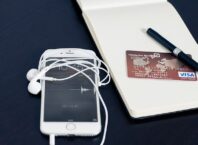New York Times wrote an article about a company who got a 166,000-dollar phone bill in the period of two days. This was extremely alarming for the owners of the company. After what seemed like ages of research, the company’s IT team found out that hackers had hacked their system and placed premium calls to faraway places. This is just one of the many examples that take place with companies in today’s time. Many of the times, these businesses do not how to gather evidence or provide information to prove their innocence or prove the fraud and at times, the case is such that they overlook the charges in their daily bills for years. And once all of the data is in front of them, the IT department gets proven guilty as security issues fall in their domain. Since this telecommunications fraud is a huge loss that no organization can afford, there is a list of things one must do and be aware of to stay protected.
Contents
The Main Types of Telecommunications Hacking
CFCA has identified User Authentication Hacking as the most dangerous telecommunications hacking. Through this, hackers can access all data on a PBX. They do this by attacking the security shortcomings of network firewalls and enter through video edge gadgets. Usually, this process is completed through SIP trunking. Once the hacker is in the system, after planning for days and hours to not let any security obstacles come in his way during the time the organization is least active, they alter routing plans and can make calls. After that, they quickly take their leave for the owners to disappear the outrageous bill of the distant calls made. User Authentication Hacking can occur between 75-90 percent in bigger companies.
Another type of hacking is SIP Toll Fraud Hacking, which the companies pay less heed to because of wanting to avoid negative press. This attack occurs in the video and the audio cycles. It can happen due to the flexibility and interoperability of proprietary protocols which are present in voice and video calls. It should be noted that hackers need to get access to the internal connectivity systems in mobile gadgets. This way, they can find their path to the user’s PBX through his/her dial plan. In organizations where the DNS record is known, the opportunities for hackers to carry out this attack are many. One should be aware of how hackers actually exploit videos. Step one includes the attackers finding potential victims by scanning SRV records. In step two, a bot set up by the hacker will place a call to a familiar phone number through the gatekeeper, which is external. If the earlier two steps are successfully completed, the hacker goes on to the third step in which he deciphers what prefix is needed to know so that the calls are actually routed to the phone provider. Then comes the horribly expensive bill but till the time, the hacker has taken his leave and has left without a trace. The example of the phone number in step two is as follows: if a ‘suitable’ number for the hacker is assuming, ‘872-929-9292’ then the hacker will try numbers like, ’01-872-929-9292’, ’09-872-929-9292’ etc.
Action against SIP Toll Fraud Probes with Vyopta
By searching the CDR’s (Call Detail Records), collecting them and retaining them, Vyopta helps organizations prevent SIP Toll attacks. During the process, Vyopta employees guide the organization to put up with security measures using different techniques. Vyopta understands that even though security is the responsibility of the IT department, it is certainly not the only thing they are responsible for.
Understanding Mobile Security
To keep mobile devices secure, there are a few steps, which should be essentially followed. As they say, one’s focus should be on protecting the information one’s mobile has rather than the mobile itself. Even though one’s device may have cost a lot, if data is misused, it would prove to be costlier.
The information on your mobile phones can be protected and thus it should be. This way it will not be easily accessible. Even if your phone gets lost, stolen, etc. no one will be able to access your personal stored data.
Always remember to back up data. Security issues or no security issues, backing up data to a cloud or computer can be lifesaving. This way, you can never lose your data. Another way to go would be to avail the services of a provider that offers a security suite for your devices. For example, Spectrum Select Package comes with a complete protection suite that helps you against the online threats so you can have a peace of mind knowing all your data is safe.
Even though most phones have other ways to verify your identity other than passwords, such as patterns, codes, touch ID and even face ID, many people do not have verification enabled. Verification helps protect your phone.
In today’s time, it is vital to use mobile security software for the protection of your device. Mobile software for both Android devices and IOS devices are readily available. If you don’t want to purchase it at once, many even have the trial versions for you to use but the trial versions don’t offer the full protection services. Make sure that the mobile security software is not a scam. This mobile software can help protect your phone against malicious software, viruses, and other threats.
Usually, smartphones have an option, which erases all data on your device with wrong passcode attempts. This helps if your phone gets stolen. If you do not have that option inbuilt in your device, you can always download devices, which can allow you to do that. If your phone gets lost, iPhone has an inbuilt ‘Find My iPhone’ feature, which tracks your phone. On Android, you can download applications for this. These applications are connected to the cloud, which can help locate your phone wherever it may be.
Most companies have company mobile phones. These phones are there for the employees to use in the office premises. The IT departments of the organizations should have restrictions enabled on those devices. Users should not be able to download applications of their choice. Updates should be rolled out accordingly.
Have rules against the employees bringing their own devices. This can create a huge risk for the crucial data of your company to be compromised by it ending up on your employee’s gadget. Companies which have personal client information usually do not allow their employees to carry gadgets in the office premises.
If you’re not using Bluetooth or airdrop, it should be turned off. Users may end up connecting their devices to yours, accessing all your day and hence, proving to be to a threat.
Moreover, companies should have information technology-based policies on mobile phones in the employee’s handbook for security reasons. Usually, this is not done even in established organizations.
Conclusion
The aforementioned are just some of the common ways to protect your phones, devices and their data in today’s world. As technology progresses, time changes and more advancements take place, individuals and organizations should keep themselves up to date in order to protect their personal and official data. Each telecom advancement comes with a vulnerability that needs to be addressed so that viruses, threats and malicious software cannot harm the data stored on your devices and using your devices as bait, cannot end up giving you unaffordable losses.
Author Bio:
Farhan Suleman having completed his studies in Marketing and Media, Farhan Suleman has ample experience in the field of content marketing. He regularly writes blogs pertaining to the ongoing trends and never fails to inspire his readers with an interesting read. Apart from writing, he is an enthusiastic chess player with a rating of more than 1800 Elo.
Twitter: @farhansule007
Quora: Farhan Suleman
LinkedIn: Rao Farhan Suleman












